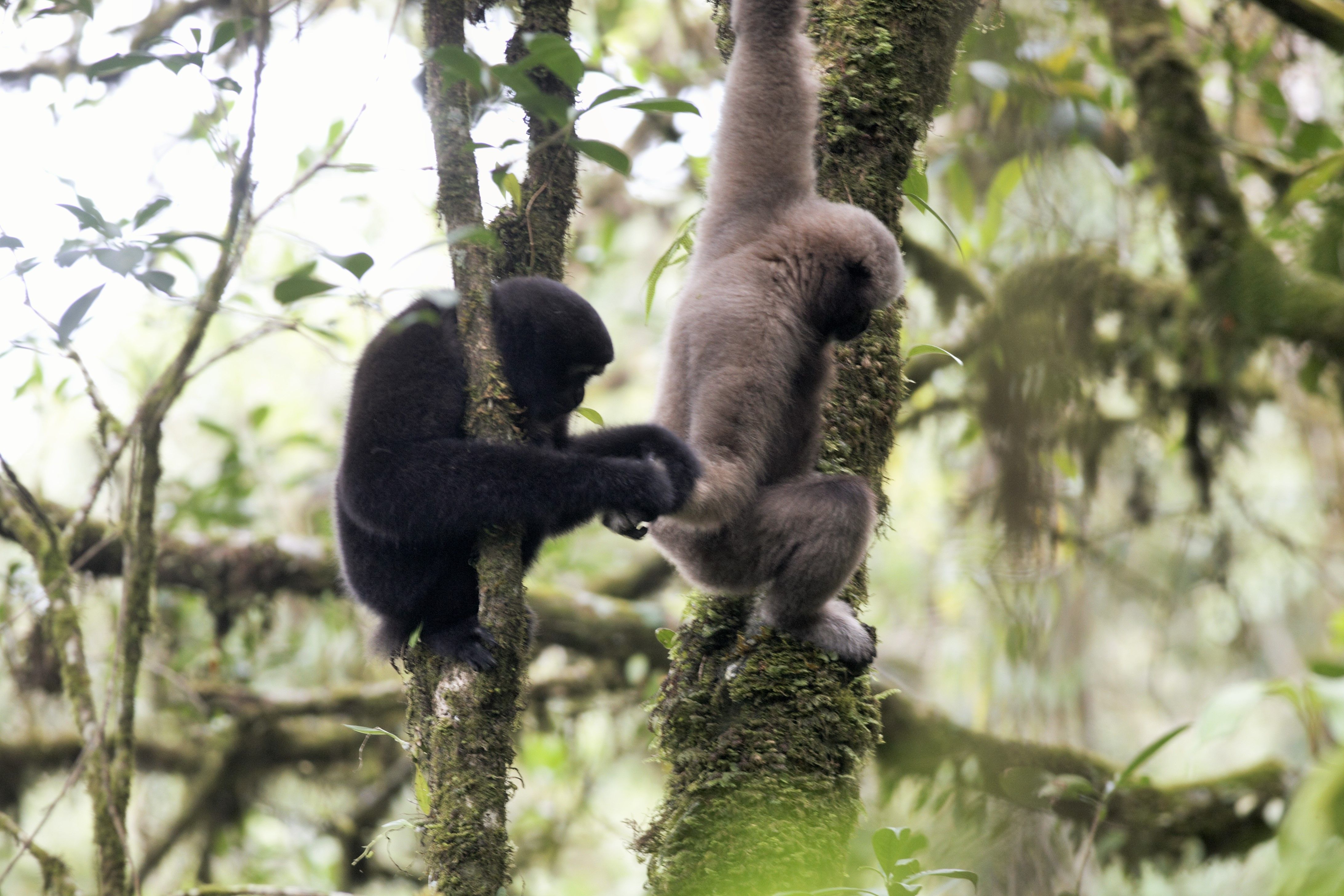Love songs lead to discovery of new endangered primate populations
Scientists identified skywalker gibbons in Myanmar
Photo: Peng-Fei Fan
A pair of adult Eastern hoolock gibbons, close relatives of the skywalker species.

A new study has found skywalker hoolock gibbons (Hoolock tianxing) living in Myanmar, after previously known to reside only in China.1,2 Although precise numbers are unknown, investigators have estimated these Myanmar primates to be the world’s largest population of the species, outsizing the fewer than 200 known Skywalker gibbons previously known to exist.1
The Karen C. Drayer Wildlife Health Center at the University of California, Davis, led the study with field explorations carried out by partner organizations that included Nature Conservation Society Myanmar and Fauna & Flora International—Myanmar. “We were able to genetically identify 44 new groups of skywalker gibbons in Myanmar,” said Tierra Smiley Evans, the study’s senior author and research faculty at the One Health Institute in the UC Davis School of Veterinary Medicine, in a news release.1 “This is a huge resource and success story for Myanmar.”
Skywalker gibbons were first identified in 2017 with a confirmed population of only 150 primates, all in China. Based on the ecology of gibbons and the biogeographic patterns of large rivers, investigators first hypothesized that the Skywalker species likely extended into Myanmar in area west of the N’Mai Hka and Ayeyarwaddy rivers and the Salween River to the east. Although a skywalker gibbon was morphologically identified by a specimen collected in 1913, in Myanmar, and kept at the Natural History Museum in London, England, no live members of the species were confirmed in Myanmar over the past century. However, primate surveys have been historically limited in Myanmar because of civil conflict near protected areas and reserve forests, according to the study authors.2
The discovery of new skywalker gibbon populations was made with help from acoustic monitoring systems in the field between December 2021 and March 2023. According to UC Davis, investigators listened each morning for love songs sung by these primates and recording their solos and duets. Field investigators then collected chewed plants and fruits using a noninvasive DNA sampling technique created by Smiley Evans, from which genetic analysis confirmed the species.1
Although the discovery raises the population estimates for Skywalker gibbons, the species in Myanmar mostly lives in unprotected areas. Because these primates continue to be threatened by habitat loss, forest degradation, and human conflict in Myanmar, the study’s authors have suggested the species retain its status as endangered on the IUCN Red List compiled by the International Union for Conservation of Nature and Natural Resources. They also suggest having the Skywalker gibbons’ habitat in Myanmar receive a status as a protected area.1
“We found skywalker gibbons in 2 regions of Myanmar: Kachin State and as far south as Shan State, in degraded forests and at much lower elevations than we expected, showing us they’re highly adaptable,” Evans said in the release.1 “There needs to be a protected area system there that focuses on them.”
The study was funded by Arcus Foundation, the IUCN SSC Primate Specialist Group Section on Small Apes, National Science Foundation and the International Centre for Integrated Mountain Development. Investigators included authors from the University College London, Zoological Society of London, German Primate Center, Livestock Breeding and Veterinary Department Myanmar, Myanmar Timber Enterprise, California National Primate Research Center, Sun Yat-Sen University and the IUCN Species Survival Commission (SSC) Primate Specialist Group Section on Small Apes.1
References
- Kerlin K. Love songs lead scientists to new populations of Skywalker gibbons in Myanmar. UC Davis. February 14, 2024. Accessed February 14, 2024. https://www.ucdavis.edu/climate/news/new-populations-skywalker-gibbons-found-myanmar
- Aung PP, Lwin N, Aung TH, et al. Confirmation of skywalker hoolock gibbon (Hoolock tianxing) in Myanmar extends known geographic range of an endangered primate. Int J Primatol. Published February 14, 2024. Accessed February 14, 2024. https://doi.org/10.1007/s10764-024-00418-6